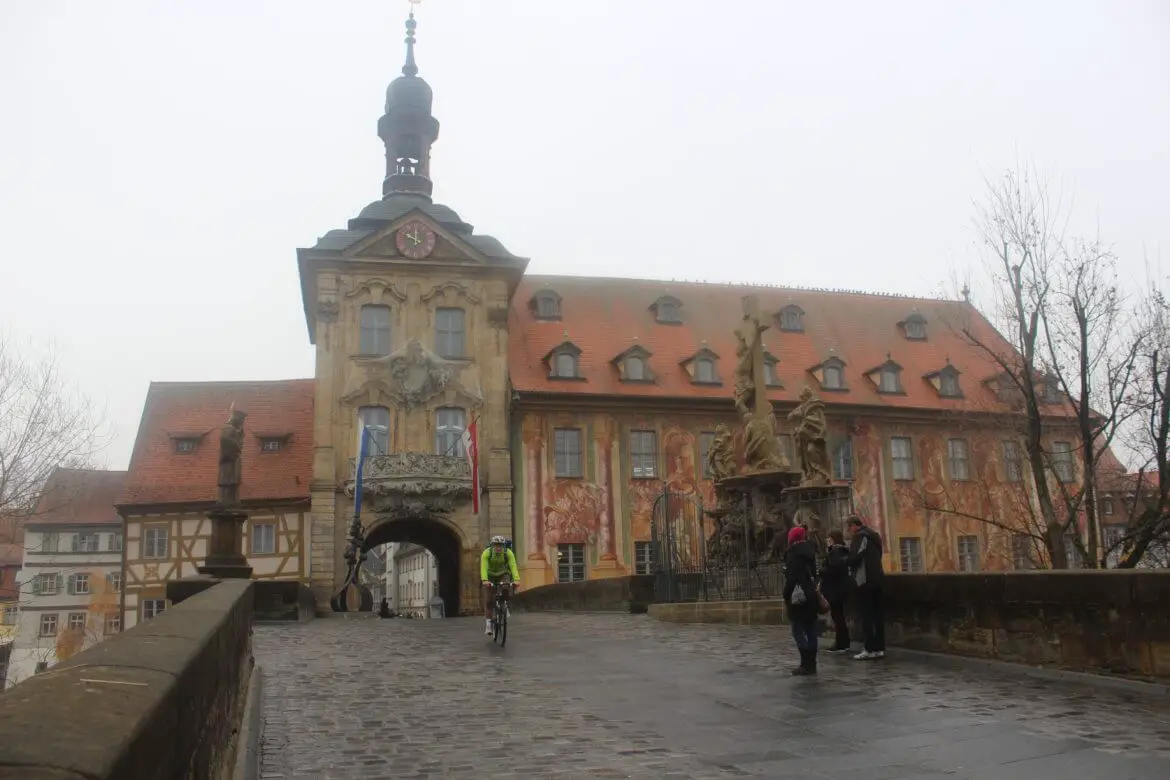
I fell in love at first sight with Bamberg on my trip to Germany last December. I knew that its city center was on the UNESCO world heritage list and had seen photos of its city hall before, but only thought of it as a nice stop on the way. What I did not expect was to find an entire town as cute as its name sounds. I think I associate Bamberg involuntarily with Bambi or Bumble Bee, to seem more modern. After a stroll in the old town, you could not blame me for this. It survived WWII almost without a scratch. That’s why the medieval architecture is almost intact, compared to Nuremberg. It looks like the perfect venue for a Disney movie, with little brightly painted houses, cobblestone winding alleys and large squares.
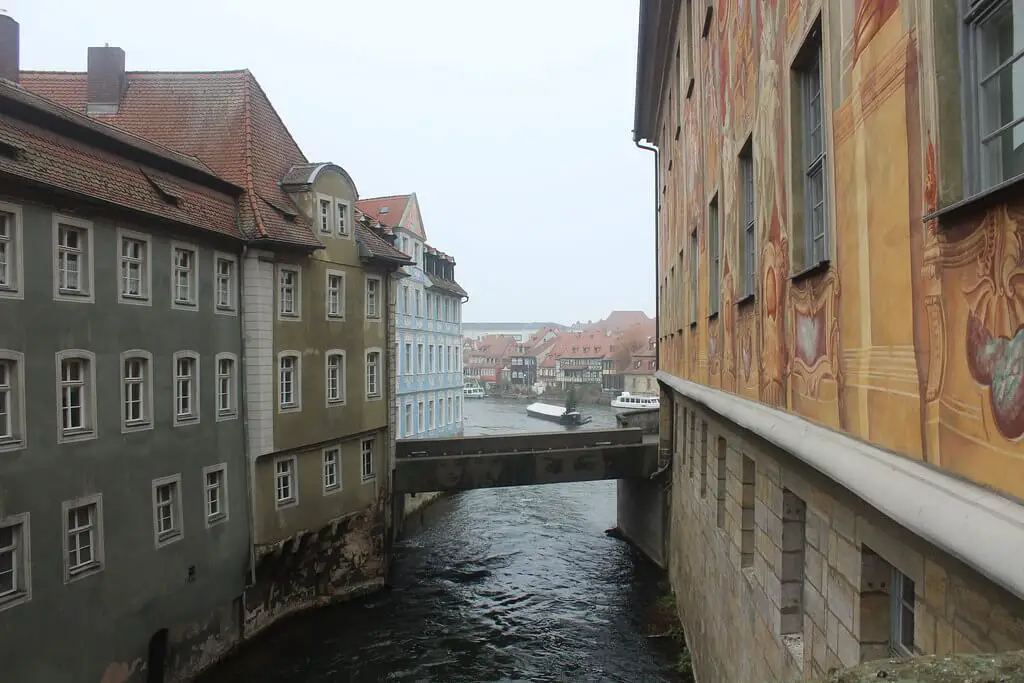
Top things see in Bamberg
- The Old Town Hall (1376), the most popular and photographed place in Bamberg. If you have seen any photo of this underrated town, then it was of this building set on a tiny artificial island in the Regnitz river, connected to both banks by arched bridges. There is even a fun back-story about this iconic site. As per the legend, the bishop did not want to grant any land to citizens to raise it. The Bambergers decided to build it in the middle of the river, between the bank where the ordinary people lived and the opposite bank, where the bishop ruled. Make sure to explore all its angles. On the exterior walls, there is an one-of-a-kind baroque and rococo fresco and the half-timbered Rottmeister house (1688) that floats above the river.
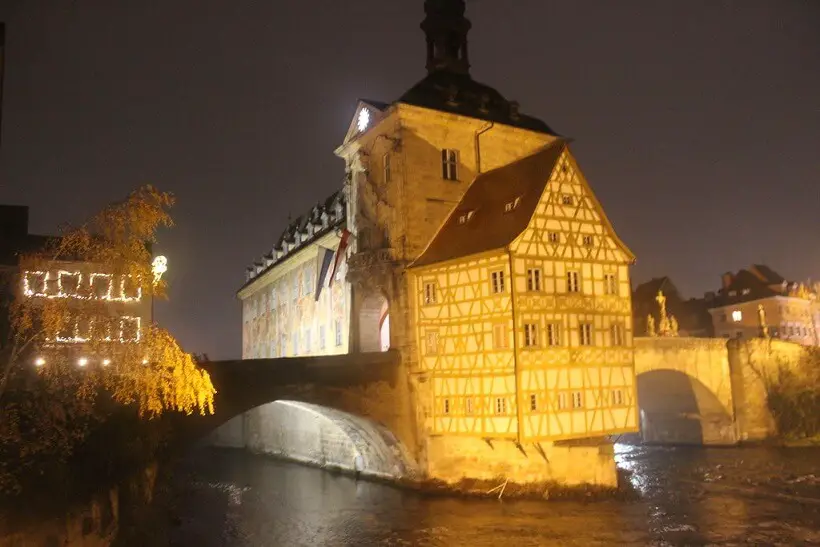
- Little Venice, a picturesque area that belonged to the fishermen in the 19th century. To make things even better, you can admire the colorful half-timbered houses from a real Venetian Gondole. The gondolier can only be found on the weekends and it costs 60 euro for half an hour for 6 persons.
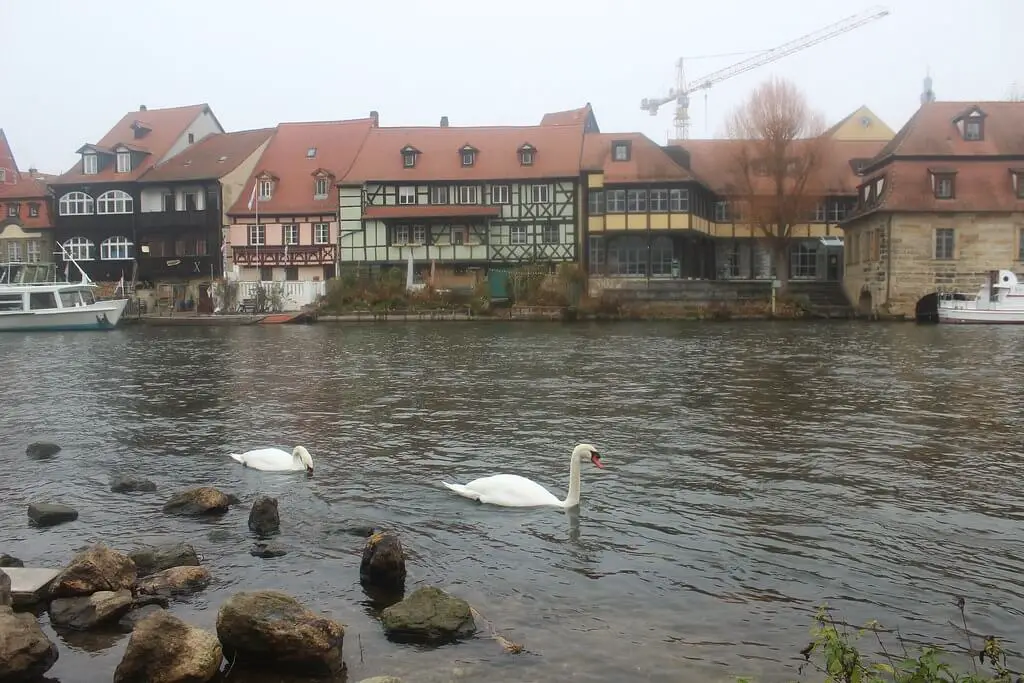
- The Old Town is the biggest preserved old town center in Germany, but still small enough to explore on foot. Stylish and lively, it has been an UNESCO site since 1993. A stroll on its narrow, winding cobbled streets feels like walking through a fairy tale. As you look around, keep an eye on the pieces included in the Bamberg sculpture trail: Centurion I, Lady with fruit, Meeting. Every time the citizens see a sculpture they like, they raise money and buy it collectively to display in their beloved town.
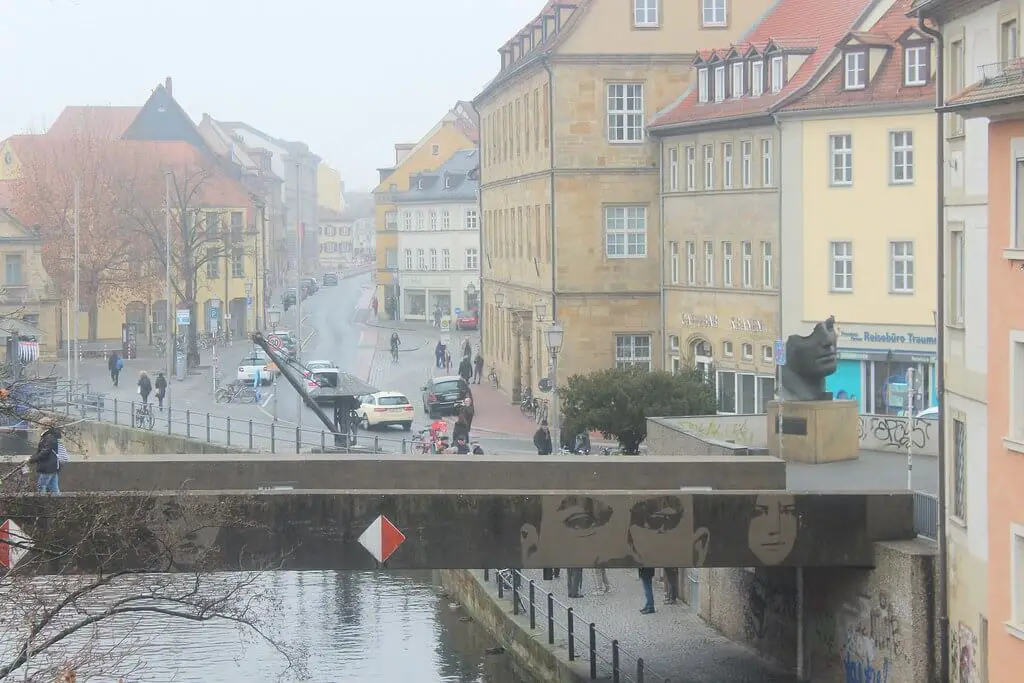
The Old Town of Bamberg with Centurion I on the right, Germany 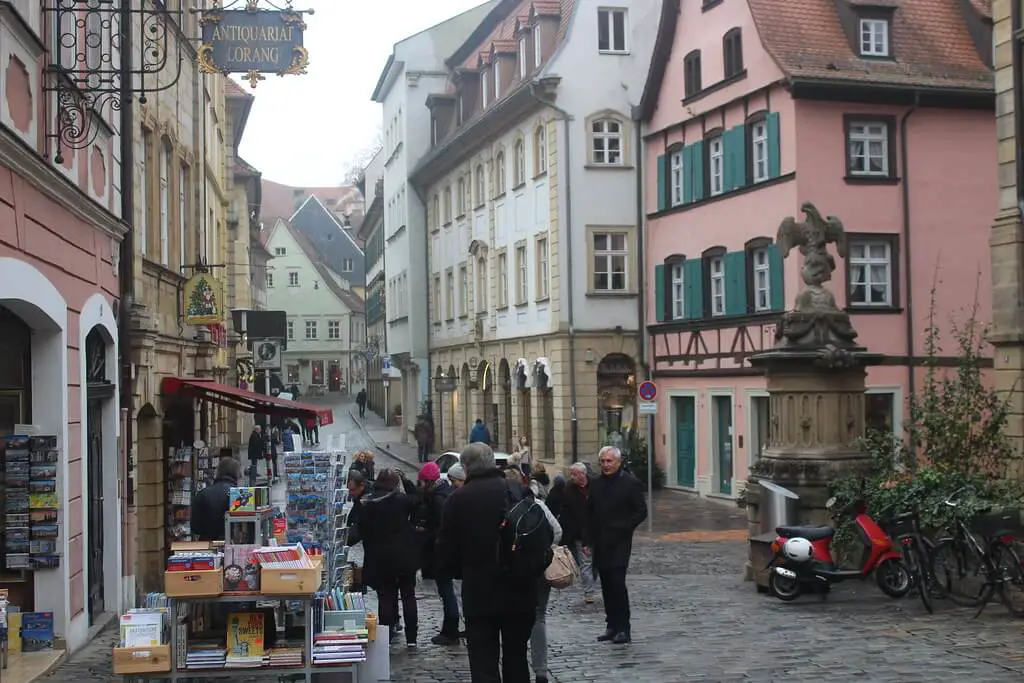
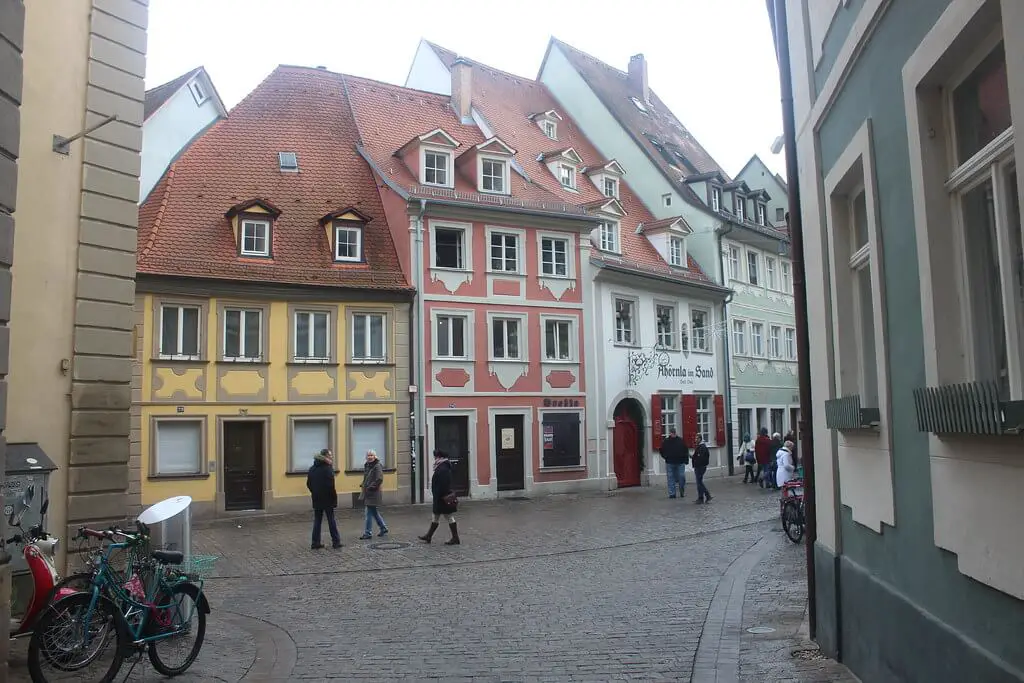
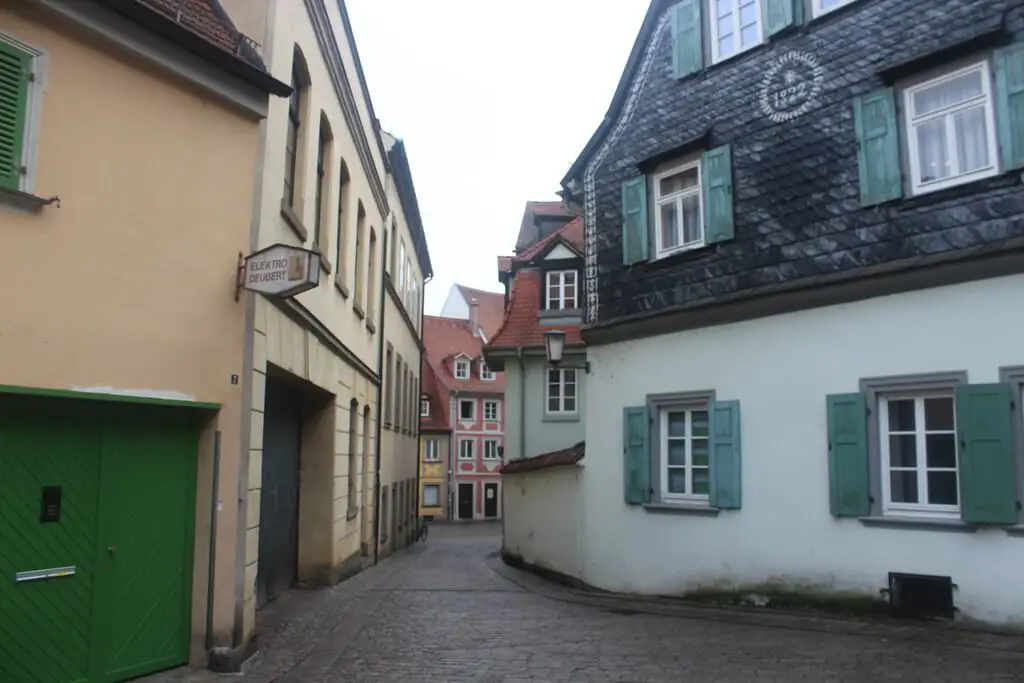
- The Green Market makes for a wonderful place to spend some time shopping and people watching. Over the market reigns Neptun from his beautiful fountain.
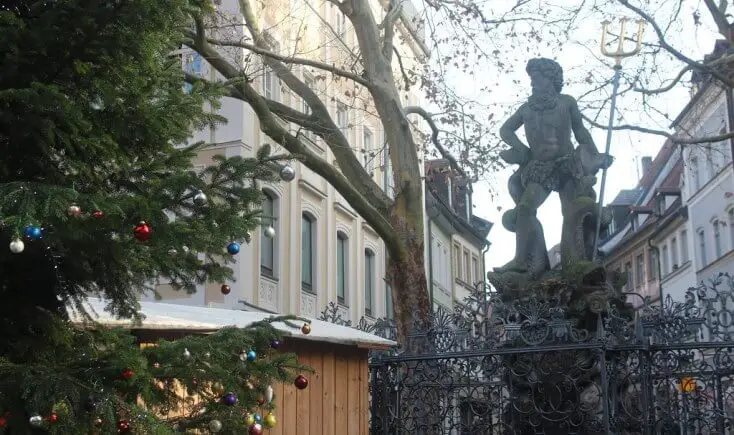
- Oberre Pfarre, a Gothic church founded in the 14th century. One of its towers may look like it doesn’t belong there, which is actually true. It was built as a city watchtower and then incorporated into the church.
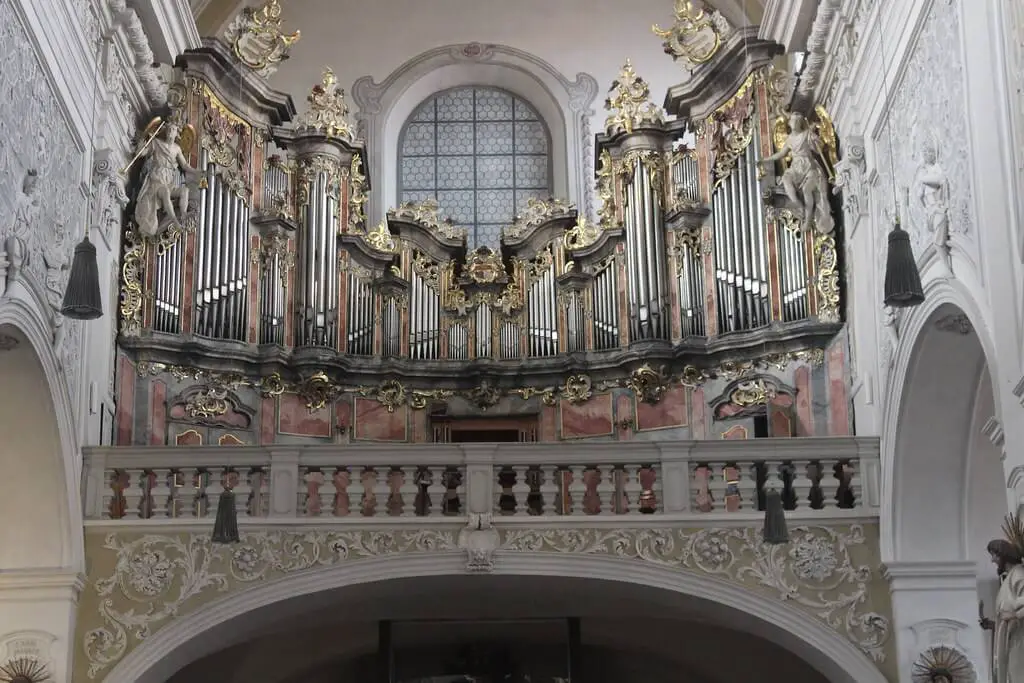
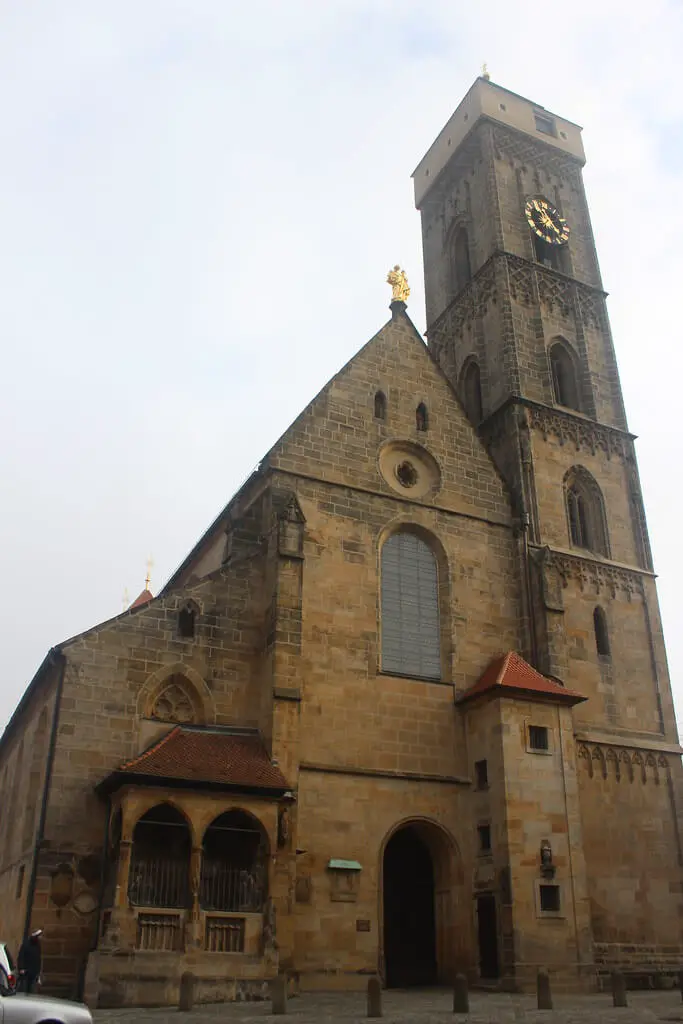
- Follow the narrowest street with stairs opposite the church and you will get into the Cathedral Square, where the next three sites are.
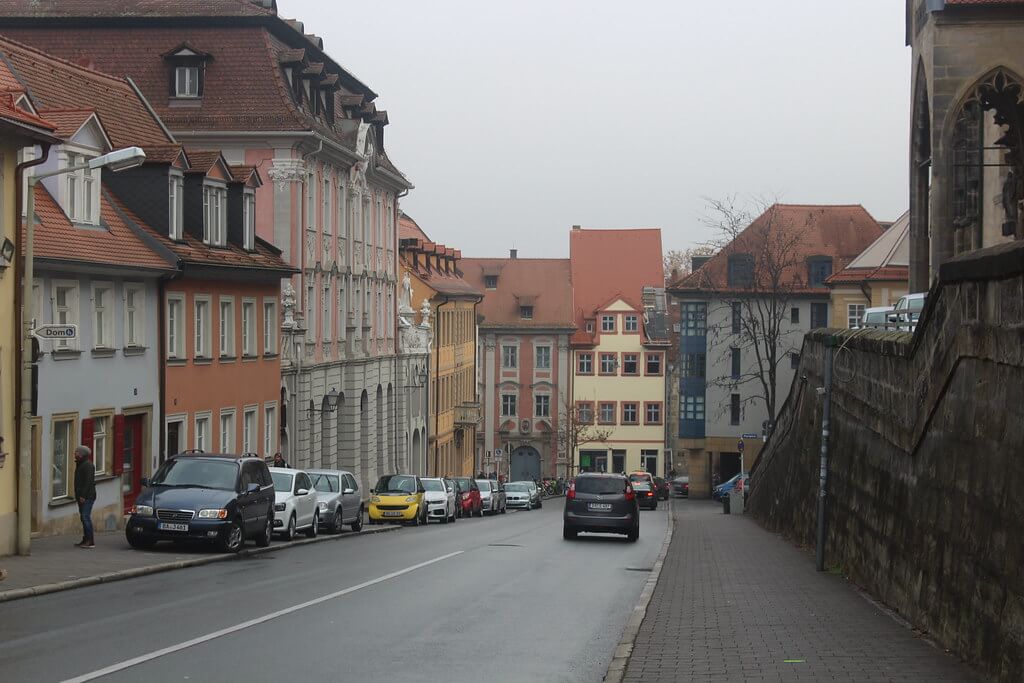
- You’ll have probably spotted the 4 towers of St. Peter’s and St. George’s Imperial Cathedral from far. The one that still stands today is actually its third version from the 13th century. The first one (from the 11th century) and the second one were burnt to the ground in less than two centuries of existence. It shelters the tombs of Pope Clement II, the only pope buried outside Italy, and of the imperial couple Heinrich II and Kunigunde. The statue of the unknown Bamberg horseman, that appears on all the souvenirs, watches over them. There were several suppositions regarding the identity of this crowned, yet unarmed man. Candidates were Stephan of Hungary, Constantine the Great, Konrad II and even one of the three wise men.
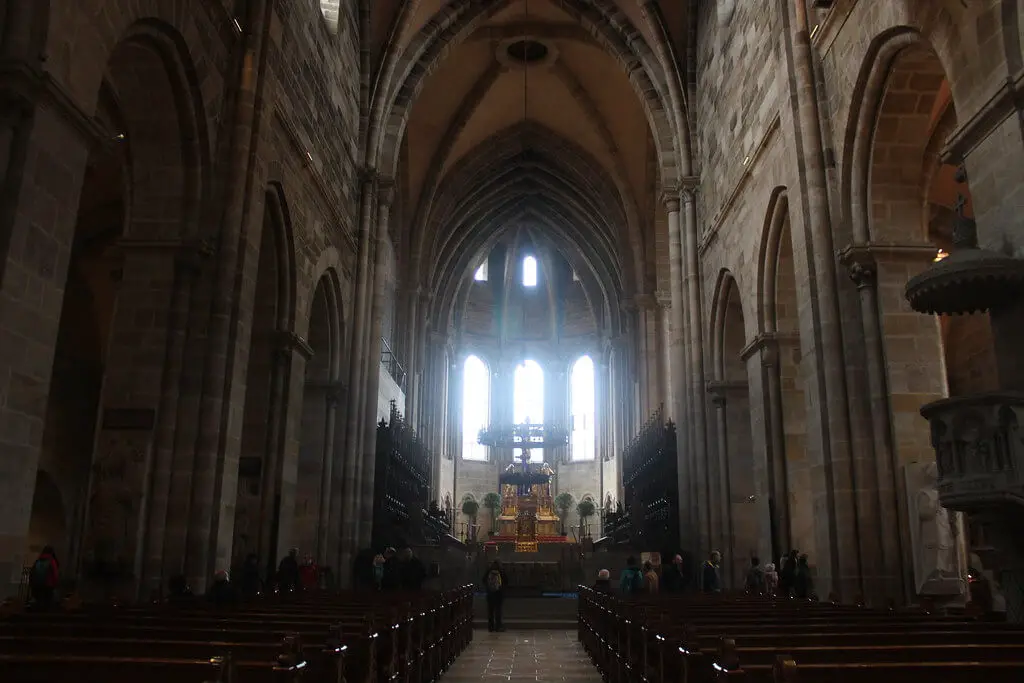
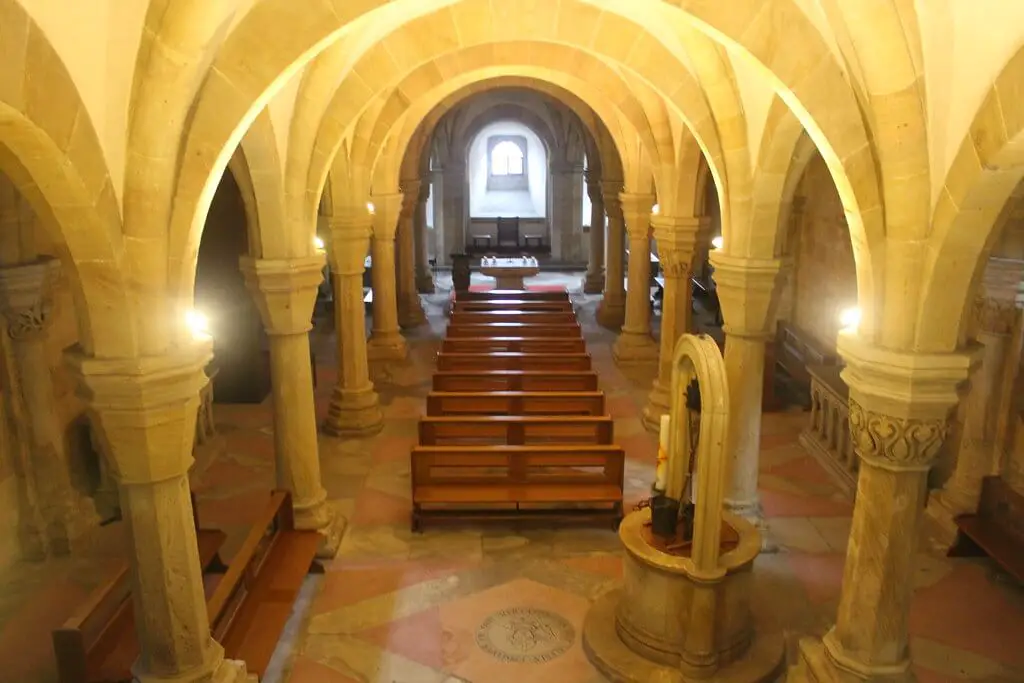
- Next to the cathedral lies The Old Court (Alte Hofhaltung), the bishop’s residence until the 17th century. Today, its lovely inner courtyard hosts many outdoor concerts.
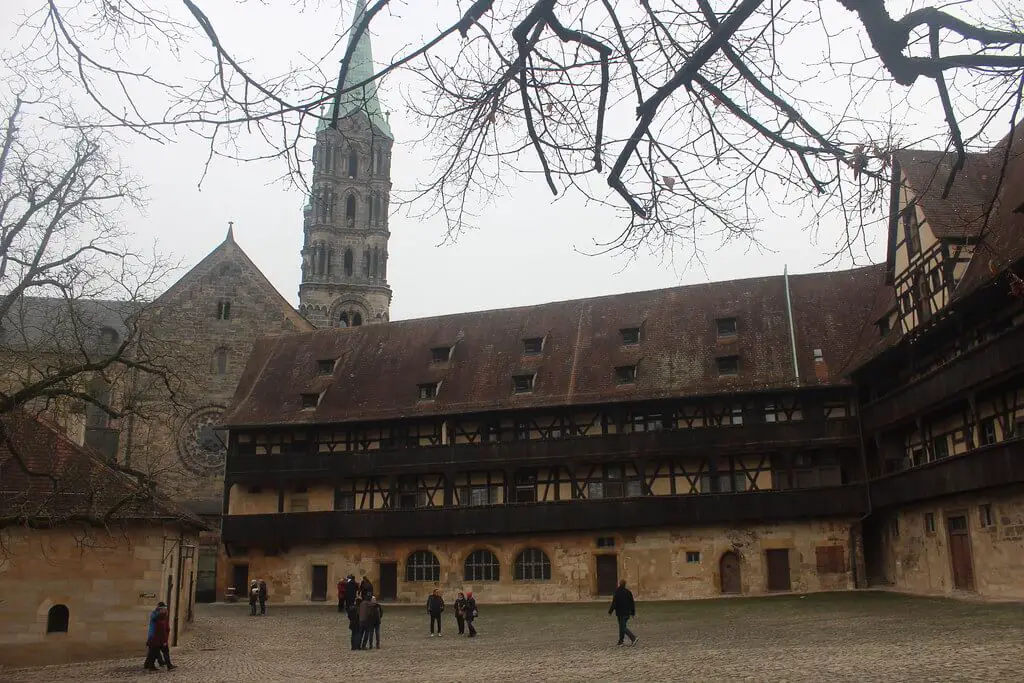
- In 1602 the bishops moved to a sumptuous new palace opposite, where they would stay for the next two centuries. The New Residence is the largest palace in the city and has two original Renaissance wings and Baroque extensions built a century later. From the romantic rose garden behind it, you can get one of the two best views of the old town.
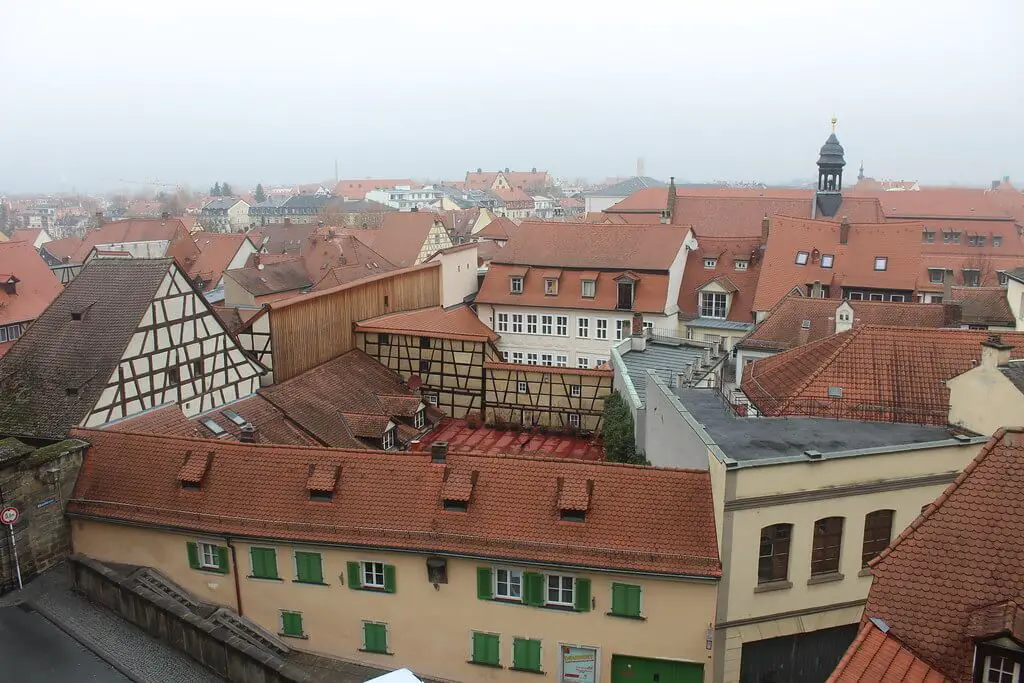
- Michaelsberg Abbey is a little farther from the other ones, on another of the seven hills of the town. From the terrace of this Benedictine monastery, you’ll get the other best view over the city. I could not see the interior, as it was closed for renovation when I visited.
- On the highest hill stands Altenburg castle since the 12th century, when it was used as a refuge for the people during battles and raids. Later it served as the home of Bamberg’s bishops before it was destroyed in 1553. After that, the Altenburg castle functioned as a prison until it was restored in the early 19th century. The remains of the original medieval structure are now part of the surrounding walls and the 33-meters tower. The old iron frame in the tower was used for sending signals to Giechburg castle, 20 kilometers away. Climb up to the castle for a panoramic view of the surroundings and a good meal at the restaurant.
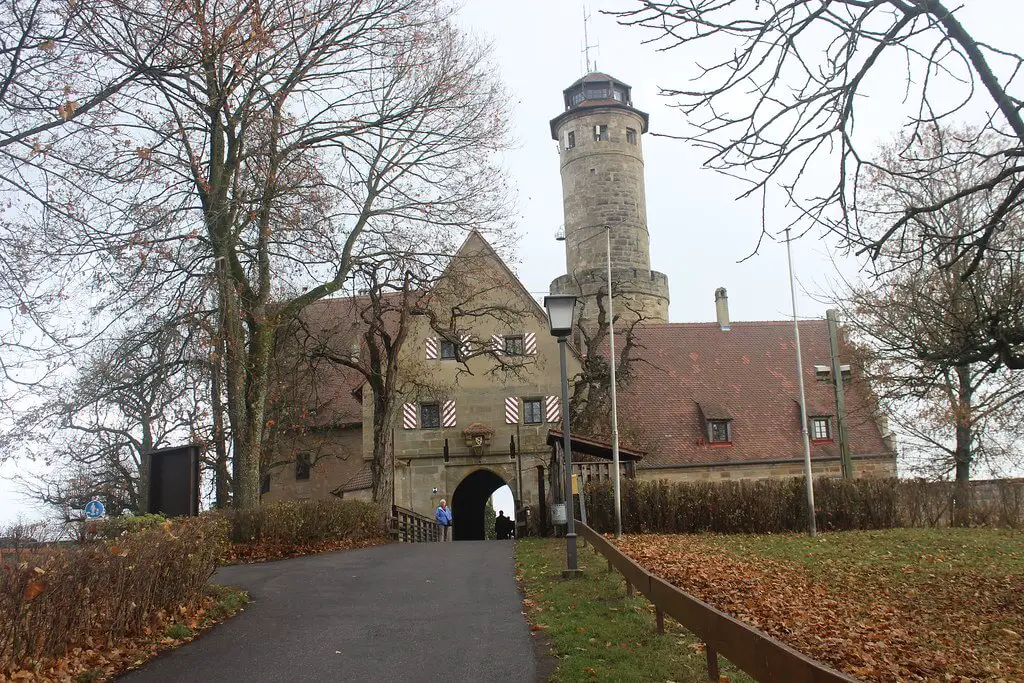
Tips & tricks for your trip to Bamberg
- Bamberg was built on seven hills, each of them crowned with a church and it’s also called the “Rome of Franconia”.
- Regnitz river is divided into two arms at the entrance in Bamberg that unite again before the exit. Never ask somebody for directions to the river. It happenned to me and I really think I mislead two nice ladies. I’ve told them that I had just crossed it and sent them backwards. Now, I really believe they meant the other arm of the river, the one with the city hall, which I reached soon after that. Trust me, ask for something more specific than the river. Sorry ladies! (in case you are ever going to read this)
- If you don’t have a car, you can get to Bamberg from Nuremberg by train in 40 minutes. The trains leave and return every one hour from the main train station.
- Do not miss the unique smoked beer brewed following centuries-old traditions. Only two breweries in the city produce it, Schlenkerla, on Dominikanerstrasse, where we drank ours, and Spezial. You could buy it amost everywherein town, but I suggest you try it directly at the source. For me, it tasted like liquid bacon, which I liked at first, but enjoyed less and less the more I tasted. No matter if you will like it or not, it still remains a must try.
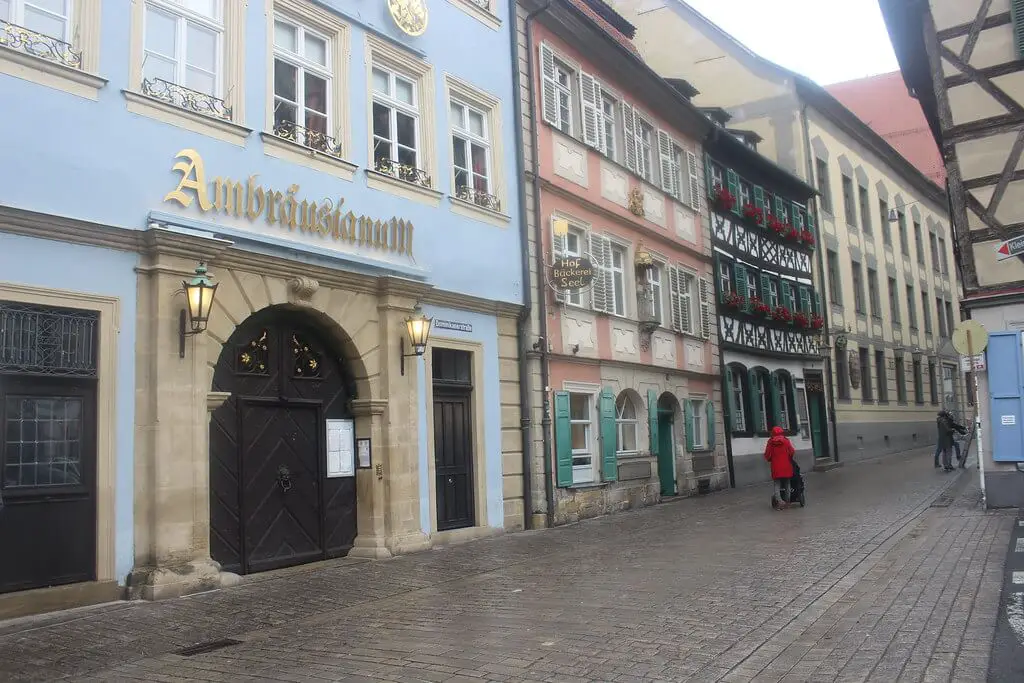
Dominikanerstrasse with Schlenkerla brewery, Germany - If you want to eat something traditional, ask for Bamberger onion, a grilled onion stuffed with meat.
- Bamberg card is a very good deal. For 14.90 euro you get to take part in a two hours tour of the city, free entrance to 7 museums (including the Ludwig collection, which is inside the old city hall) and public transport in and around Bamberg for 3 days (which I think is a little bit too long, but the price is very good, even for a day or two).
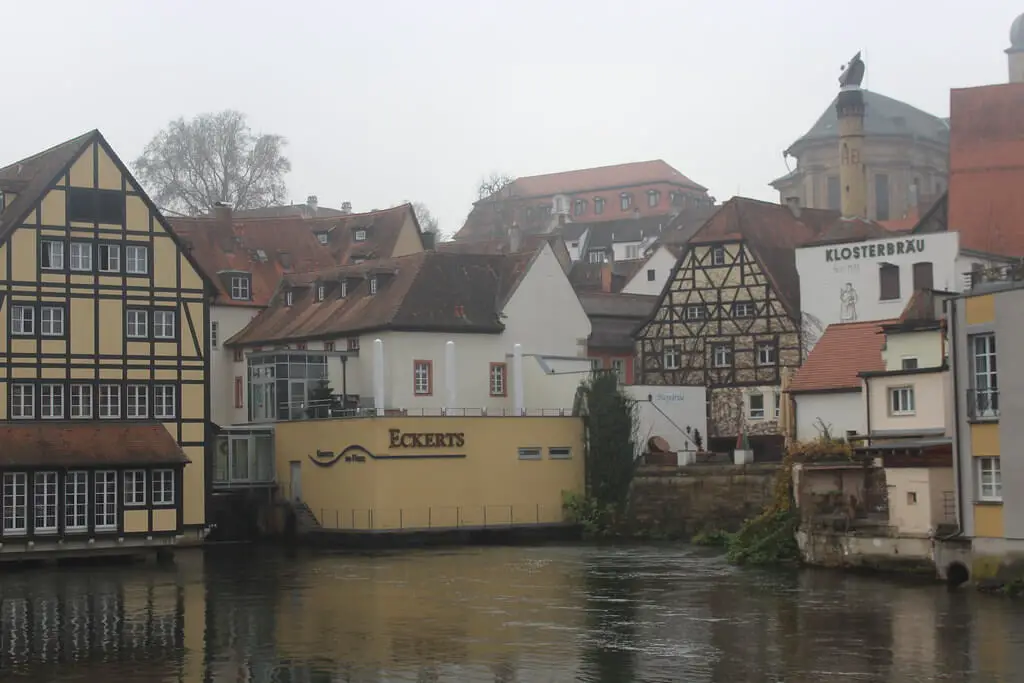
- We’ve slept in Bamberg and it was a good idea. I recommend you to stay for the night, if you have the time. Unfortunately, I can’t suggest you an accommodation, as we did not like ours at all. I’m sure you can find a nicer one.
Bamberg in December

In regards to the Christmas markets, it actually features two of them. One is very small on an alley, next to St. Johanniskapelle. That’s a crafts market, in fact. The second one lies in the heart of the old town in Maximiliansplatz. The central piece of the square is a nativity scene which depicts different scenes as Christmas approaches. Other wooden stalls spread on the streets nearby, where the usual Green Market is. There was also an enchanting Christmas tree in front of the Neptun fountain. The Bamberg Christmas market did not look as crowded and would be a very nice place to try that egg punch and enrich your cups collection with a boot shaped one.
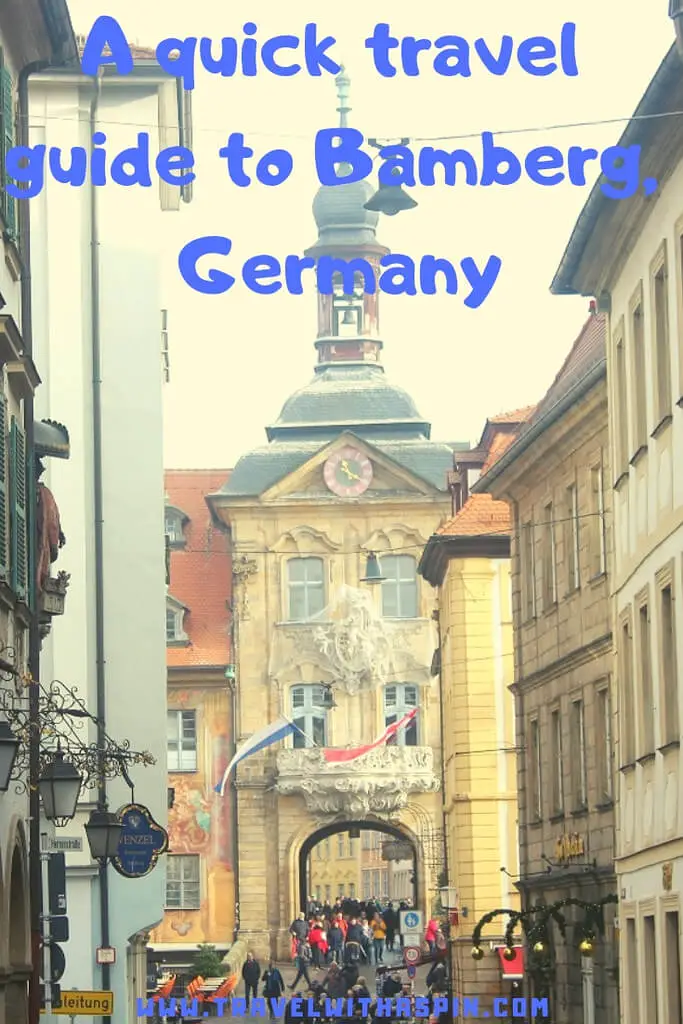
What do you think? Would you visit Bamberg?
Travel With A Spin contains affiliate links. If you make a purchase through these links, I will earn a commission at no extra cost to you. Thanks for reading!
